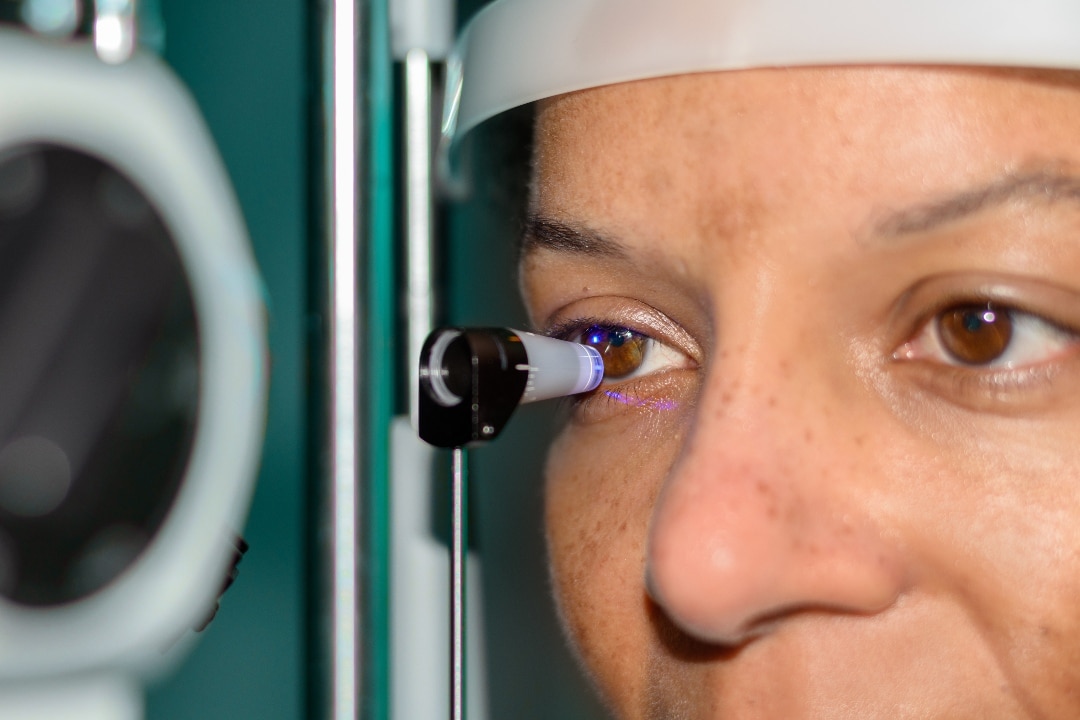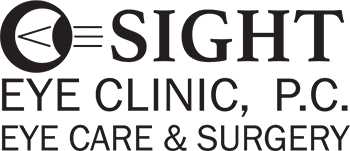Glaucoma: Why We Give You that Pressure Test
There’s one part of an eye exam many of us don’t really look forward to: the pressure test.
And trust us, we get it. Nobody likes to have something come up and touch their eyes. We have eyelids specifically to shield us from such things, after all! Having to repress that urge to blink when you know something’s coming can be anxiety-inducing.
But we assure you that we perform this test for a very good reason: it plays a role in how we detect glaucoma in a patient. And the sooner we diagnose a case of glaucoma, the more quickly and effectively it can be managed.

What is Glaucoma?
Glaucoma is not one specific condition, but rather a group of conditions. Each affects the health of the optic nerve.
Each eye has an optic nerve. This nerve is responsible for sending visual information from the eye to the brain, where it is interpreted as vision. When the optic nerve becomes damaged, it can result in blind spots appearing in your vision. It’s a lot like an electronic sign that goes on the fritz, leaving part of its display blacked out.
For reasons we do not yet fully understand, most cases of glaucoma are tied to a buildup of pressure within the eye. Our eyes are filled with a fluid called aqueous humor, which is steadily refreshed and drains out through an area called the trabecular meshwork. If something blocks the meshwork, or we produce more aqueous humor than we can normally drain out, eye pressure increases and the optic nerve can sustain damage.
In the most common form of glaucoma (open-angle), symptoms include the above-mentioned blind spots, usually in either your peripheral vision or central vision. In advanced stages, tunnel vision is common.
Open-angle glaucoma tends to be chronic and more insidious in its onset. In fact, many patients have no idea that they have it.
Another form of glaucoma (acute angle-closure) tends to cause more discomfort in the form of headaches and eye pain. You are also more likely to have redness around the eyes, as well as blurred vision and seeing halos around lights. This form of glaucoma tends to have a more acute onset.
While most cases of glaucoma involve high eye pressure, there are some cases in which optic nerve damage happens without any change in eye pressure whatsoever (aka normal-tension glaucoma). Some cases occur so slowly that you do not realize there is a problem until vision becomes affected, while other cases develop more quickly.
Unfortunately, once damage to the optic nerve occurs, it is impossible to repair. Given the stealthy and sometimes uncertain nature of glaucoma, it is very important to identify risk factors and test for the condition early and often—even before any symptoms start to appear.
And that’s where the eye pressure test comes in.

Additional Risk Factors for Glaucoma
If you have elevated eye pressure, it does not automatically mean you have or will develop glaucoma. It does, however, signify a risk for developing the condition.
Additional risk factors for developing glaucoma include:
- Having a family history of glaucoma
- Being over the age of 55 (although the condition can happen in children as well)
- Having certain other conditions, including heart disease, diabetes, or hypertension
- Being black, Asian, or Hispanic
- Having extreme nearsightedness or farsightedness
- Having had an eye injury in the past
- Having had certain types of eye surgery in the past
We will take all risk factors into consideration when recommending a plan moving forward. If you are currently having no vision loss or other symptoms, our primary goal will most likely be more frequent examinations and testing to detect glaucoma—if it happens—as soon as possible. While we can’t repair damage that occurs, we can help prevent the condition from progressing further.
A Quick Test Can Make a Big Difference
You don’t have to love the pressure test, but we hope you see why it is an important part of an eye exam. The sooner we detect signs of glaucoma, the better we can preserve your vision over the long term!
If it has been a while since your last eye exam, or you have questions or concern regarding your vision, our experts would love to see you. Call Sight Eye Clinic at (616) 772-2020 to schedule an appointment with us. If you would rather reach us electronically, that’s fine too! Simply fill out our online contact form and a member of our office will respond to you during office hours.
